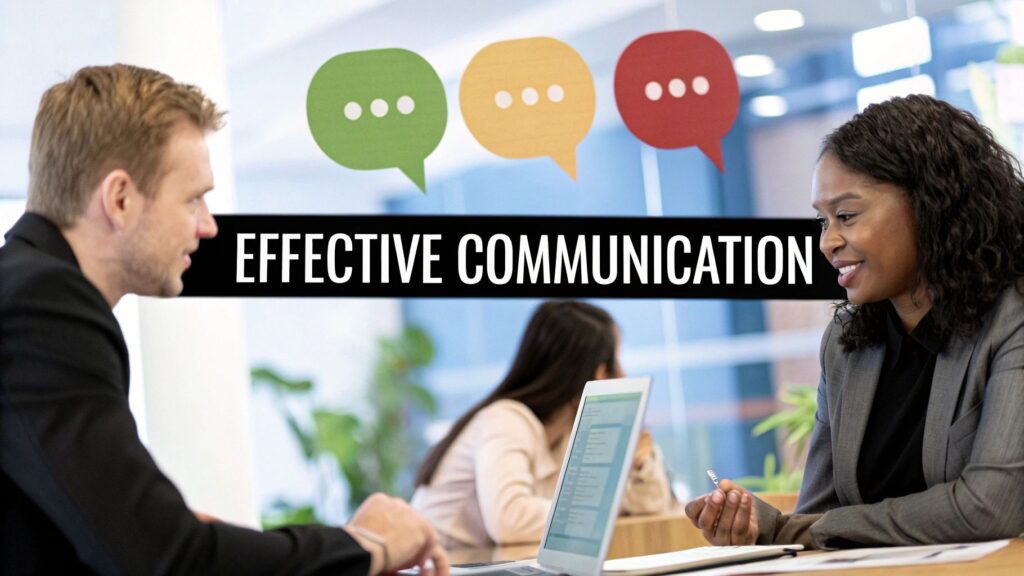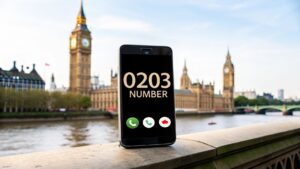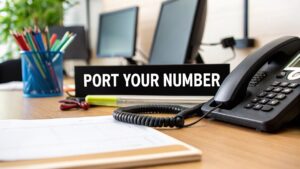In today's fast-paced work environments, being able to connect, collaborate, and share ideas clearly isn't just a professional courtesy—it's the bedrock of success. Misunderstandings can derail projects, lower morale, and cost valuable time and resources. On the flip side, mastering effective workplace communication skills can accelerate your career, build stronger teams, and foster a culture of trust and innovation, whether you're a plumber on-site, a small business owner managing a team, or a freelancer collaborating remotely.
This article moves beyond generic advice to give you a practical guide to the most crucial communication skills every professional needs. We'll break down eight essential skills, from active listening and giving helpful feedback to navigating cross-cultural conversations and resolving conflict. You won't find vague theories here. Instead, you'll get a roundup of actionable insights, real-world scenarios, and straightforward steps you can start using today. By the end of this guide, you will have a clear framework for transforming your professional interactions and driving better results in your business or career.
1. Active Listening: The Foundation of Understanding
Active listening is a cornerstone of effective workplace communication skills. It goes far beyond simply hearing the words someone says; it means making a conscious effort to understand the complete message—both what’s said and what’s not. In any busy professional environment, from a bustling bakery to a client’s home during a plumbing job, active listening prevents misunderstandings, builds stronger relationships, and fosters real collaboration.
When you actively listen, you make your colleague, client, or employee feel valued and respected. This builds a foundation of trust that encourages open and honest dialogue, which is critical for problem-solving and innovation.
How to Practise Active Listening
Putting this skill into practice requires focus and a shift from a "what will I say next?" mindset to a "what are they truly saying?" approach.
- Pay Full Attention: Put away your phone, close extra tabs on your computer, and make eye contact. Give the speaker your undivided attention to show you value their input.
- Paraphrase and Clarify: To make sure you've understood correctly, rephrase their points in your own words. You could say, "So, if I'm understanding you right, the main priority for the project is a faster delivery time, not a lower cost?"
- Ask Open-Ended Questions: Encourage a deeper conversation by asking questions that need more than a "yes" or "no" answer. For instance, instead of "Is the report finished?", try "What are your thoughts on how the report is coming along?"
Key Insight: Active listening isn't passive. It's an engaged process of taking in information, processing it, and confirming you get it before you respond. By mastering this, you turn every conversation into an opportunity to strengthen connections and get everyone on the same page.
2. Clear and Concise Messaging
Clarity is the engine of productivity, making it one of the most vital effective workplace communication skills. It means sharing your ideas in a straightforward, unambiguous way, whether you're emailing a client about a project update or leaving instructions for your team. In a dynamic work environment, from a fast-paced kitchen to a construction site, clear messaging saves precious time, prevents costly mix-ups, and ensures everyone is on the same page.
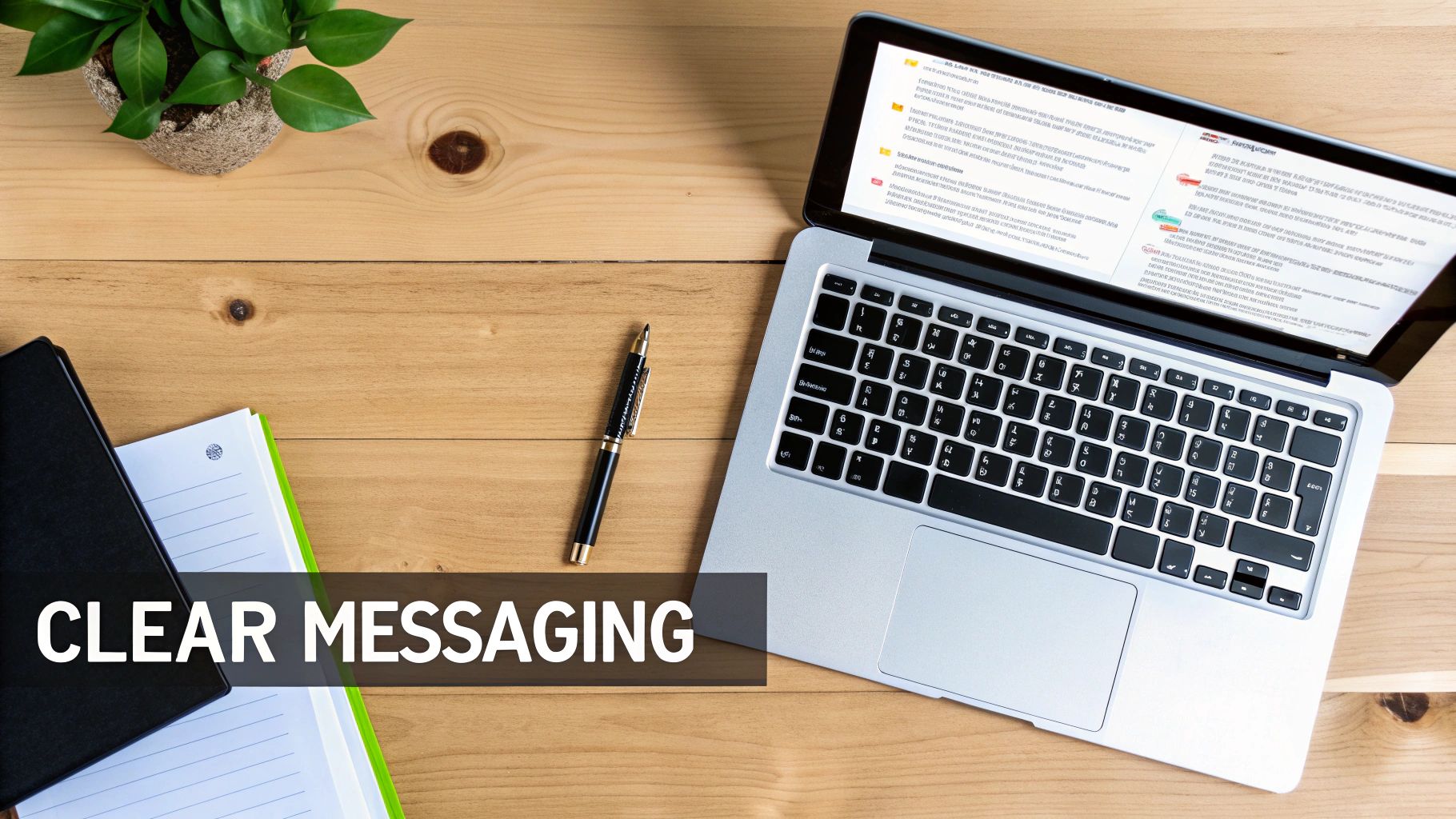
When your communication is direct and easy to understand, you remove the burden of interpretation from your audience. This respect for their time and mental energy helps build professional trust and shows you know your stuff. People know what you need, what to do next, and what the key takeaway is, allowing projects to move forward without friction.
How to Practise Clear and Concise Messaging
Adopting this skill requires you to organise your thoughts before you speak or write, focusing on the core message you need to deliver.
- Start with the Main Point: Don't bury the lead. In emails, use a descriptive subject line. In conversations or messages, state the most important information first. For example, instead of a long preamble, start with: "Quick update: The client has approved the final designs."
- Use Simple Language and Structure: Avoid jargon where you can and stick to one main idea per sentence. This makes your message easier to digest. Tools like Slack channels with pinned, bullet-point updates or clear Confluence pages with bold headers are great examples of this in action.
- Format for Skimmability: Most people scan digital communications. Use headings, bullet points, and bold text to highlight key information. This allows your reader to quickly grasp the essentials, even if they don't read every single word.
Key Insight: Being concise isn’t about being blunt or leaving out important details. It’s about trimming the fat to make the essential information stand out. By prioritising clarity, you empower your team and clients with the information they need to act decisively and correctly.
3. Nonverbal Communication: Speaking Without Words
Nonverbal communication is a powerful part of effective workplace communication skills, covering everything from your posture and gestures to your facial expressions and tone of voice. It's often said that what you don't say is just as important as what you do. That's because nonverbal cues can either reinforce your spoken message, making it more powerful, or completely contradict it, creating confusion and mistrust.
In any professional setting, whether you’re a plumber discussing a quote in a client’s home or a bakery owner training a new employee, your body language sends strong signals. Being aware of these signals helps you appear more confident, approachable, and sincere, which is key for building strong professional relationships and making sure your words land as intended.

How to Practise Nonverbal Communication
Mastering nonverbal cues means becoming more self-aware and intentional with your physical presence. It’s about making sure your body language lines up with your words.
- Maintain Open and Confident Posture: Stand or sit upright with your shoulders relaxed and arms uncrossed. This projects confidence and openness. Think of how speakers like Steve Jobs used deliberate pacing and open hand gestures during product launches to command the stage and convey passion.
- Use Appropriate Facial Expressions: On a video call in Microsoft Teams or Zoom, a simple nod or a smile can encourage the speaker and show you're engaged. Make sure your expression matches the tone of the conversation; a serious look for a serious topic shows you get the gravity of the situation.
- Be Mindful of Cultural Differences: Nonverbal cues aren't universal. While direct eye contact is a sign of honesty in the UK, it may be seen as disrespectful in other cultures. Always be mindful of who you're talking to and adapt your nonverbal signals to be respectful and effective.
- Modulate Your Tone of Voice: The way you say something can drastically change its meaning. A warm, steady tone can make feedback feel constructive, while a sharp, hurried tone can make a simple request sound like a demand. Match your vocal tone to the message you want to get across.
Key Insight: Nonverbal communication is a constant broadcast of what you're thinking and feeling. By consciously managing your posture, gestures, and tone, you add a layer of clarity and sincerity to your interactions, preventing mixed messages and building stronger, more authentic connections.
4. Constructive Feedback: The Engine of Growth and Improvement
Constructive feedback is a fundamental part of effective workplace communication skills, acting as the engine for personal and professional growth. It’s about providing specific, actionable, and balanced comments to help someone improve their performance. Whether you're a bakery owner guiding a new pastry chef or a plumber training an apprentice, mastering constructive feedback moves your team from just doing tasks to achieving excellence.
It’s not about criticism; it’s about investing in people. When delivered thoughtfully, feedback shows you care about a colleague’s growth and are committed to the team's success. This builds a culture of continuous improvement, where challenges are seen as opportunities, not failures.
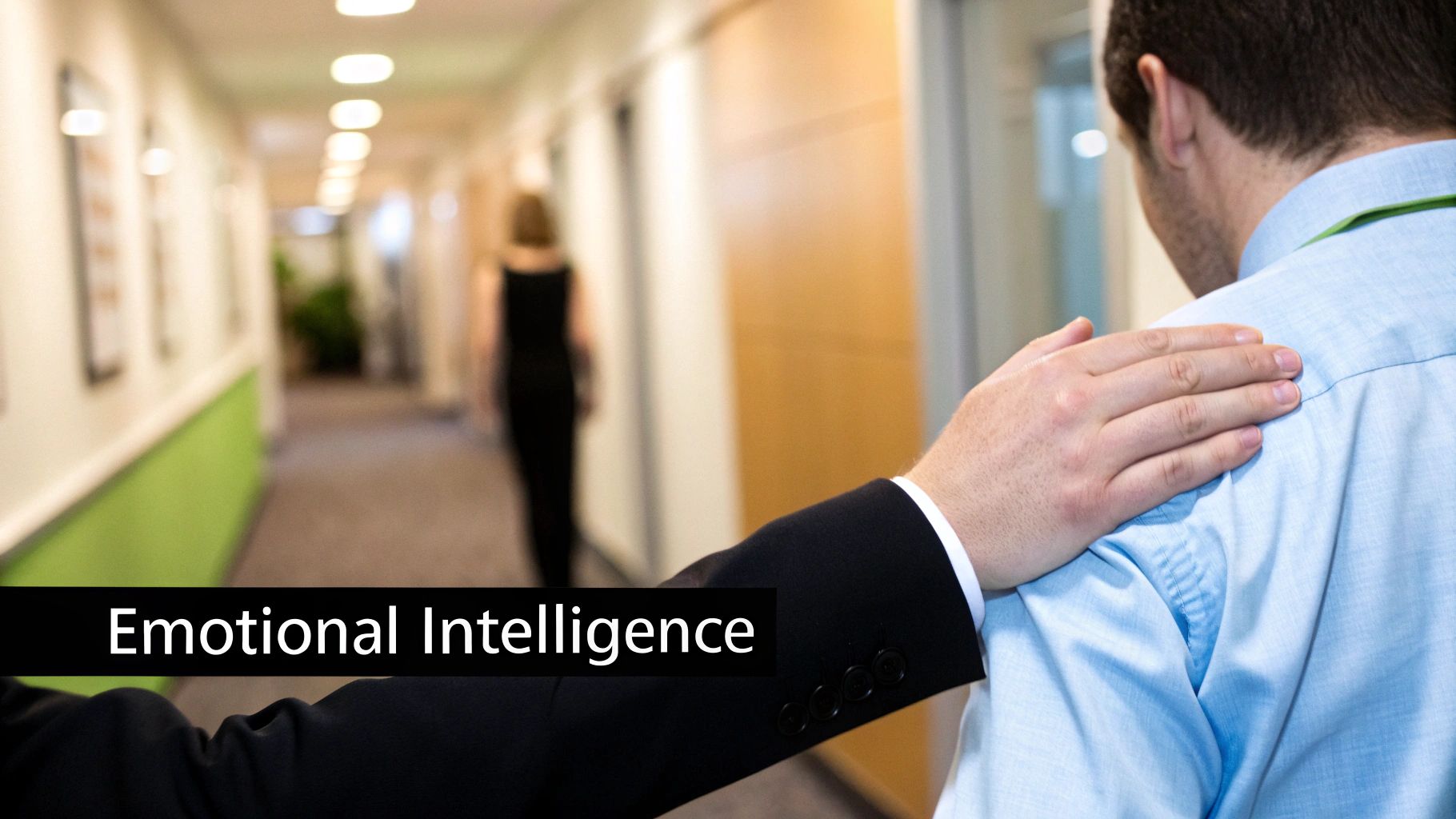
How to Practise Giving Constructive Feedback
Delivering feedback effectively takes a blend of empathy, clarity, and a forward-looking perspective. It’s a skill that gets better with practice and intention.
- Focus on Behaviour, Not Personality: Instead of saying, "You're disorganised," try, "I noticed that a couple of client invoices were sent late this week. Let's look at the system to see what happened." This frames the issue around a specific action, which can be changed, rather than a personal trait.
- Be Specific and Timely: Vague feedback like "do better" isn't helpful. Give concrete examples soon after the event happens. For instance, "During this morning's client call, your explanation of the project timeline was very clear, but it would be even stronger if you included the key milestones we talked about."
- Pair Critiques with Solutions: Don't just point out a problem; offer support. You could suggest, "I see the new ordering software is tricky. Would it help if we scheduled a short session to walk through its features together?" This turns feedback from a judgment into a collaborative problem-solving exercise.
Key Insight: Constructive feedback is a gift that fuels progress. It should always be delivered with the goal of building people up, not tearing them down. By making it a regular, supportive, and action-oriented practice, you create an environment where everyone feels empowered to grow and do their best work.
5. Empathy and Emotional Intelligence
Empathy and emotional intelligence (EQ) are critical for navigating the complex human dynamics of any workplace. EQ is the ability to recognise, understand, and manage our own emotions, while empathy is the skill of understanding and sharing the feelings of others. In a professional setting, from a high-pressure kitchen to a tense client negotiation, these skills are essential for building trust, resolving conflict, and fostering a supportive, collaborative environment.
Developing these abilities is a powerful component of effective workplace communication skills. When you can genuinely connect with a colleague's frustration or a client's concerns, you move beyond transactional interactions to build meaningful relationships. This emotional attunement, popularised by experts like Daniel Goleman and Brené Brown, is what separates good managers from great leaders and efficient teams from truly innovative ones.
How to Practise Empathy and Emotional Intelligence
Integrating EQ into your daily interactions requires self-awareness and a conscious effort to see situations from another's point of view.
- Pause Before Reacting: When faced with a tense situation, take a moment to breathe and process before you respond. This prevents knee-jerk reactions and lets you approach the situation with a clearer, more considered perspective.
- Practise Perspective-Taking: Actively try to understand the other person's position. Ask yourself, "If I were in their shoes, with their pressures and priorities, how would I feel?" This simple mental shift can completely change your approach.
- Use Reflective Statements: Show you're listening and trying to understand by acknowledging their feelings. For example, saying "It sounds like you're feeling frustrated with the new software" validates their emotion and opens the door for a more productive conversation.
Key Insight: Emotional intelligence isn't about suppressing emotions; it's about understanding them as valuable data. By learning to read this data in yourself and others, you can communicate more effectively, build stronger connections, and create a more resilient and psychologically safe workplace for everyone.
6. Conflict Resolution: Turning Disagreements into Opportunities
Conflict resolution is an essential communication skill that means identifying, addressing, and resolving disagreements in a constructive and professional way. Inevitably, in any workplace, from a busy construction site to a creative agency's brainstorming session, differences in opinion will come up. Approaching these situations with the right skills prevents minor disputes from escalating, preserves crucial professional relationships, and maintains team morale.
Effectively managing conflict transforms a potentially negative interaction into a chance for growth and better understanding. When handled well, resolving a disagreement can lead to stronger solutions and a more resilient, collaborative team. This is one of the most vital effective workplace communication skills for leaders and team members alike.
How to Practise Conflict Resolution
Developing this skill requires a shift from viewing conflict as a battle to be won to seeing it as a shared problem to be solved. This approach encourages collaboration rather than confrontation.
- Frame the Conflict as a Shared Problem: Instead of taking sides, unite everyone against the issue itself. You could say, "We seem to have different ideas on the project timeline. Let's work together to figure out a schedule that meets the client's needs and is realistic for our team."
- Encourage Stating Needs, Not Positions: A position is a fixed demand ("I need this done by Friday"), while a need is the underlying reason ("I need this by Friday because the marketing team launches their campaign on Monday"). Focusing on needs opens the door to creative, mutually agreeable solutions.
- Follow Up on Agreed Solutions: Once a solution is reached, it’s crucial to check in later to make sure it's working as intended. This shows a real commitment to a lasting resolution and helps prevent the same conflict from popping up again.
Key Insight: Conflict isn't the enemy; unresolved conflict is. By mastering conflict resolution, you create a psychologically safe environment where different viewpoints can be discussed openly, leading to more robust and innovative outcomes for the business.
7. Presentation and Public Speaking: Inspiring Action and Influence
The ability to present information clearly and engagingly to a group is one of the most powerful and effective workplace communication skills. Whether you're a gas fitter explaining a new system to a team of apprentices, a baker pitching a new product line to investors, or an entrepreneur presenting at a networking event, strong presentation skills allow you to influence decisions, share knowledge, and inspire action. It’s about more than just reading slides; it’s about crafting a compelling narrative that connects with your audience.
Exceptional public speaking, like the famously concise and impactful TED Talks or Apple's product keynotes, shows how a well-organised message can captivate an audience and make complex ideas easy to grasp. Mastering this skill elevates your professional presence and positions you as a credible expert in your field.
How to Practise Presentation and Public Speaking
Developing confidence in front of an audience comes from preparation and a focus on delivering value, not just information.
- Open with a Compelling Hook: Start with a surprising statistic, a relatable story, or a thought-provoking question to grab your audience's attention immediately. Instead of "Today I'm here to talk about…", try "Did you know that 50% of our client feedback mentions this one specific issue?"
- Structure for Clarity: Organise your presentation with a clear beginning, middle, and end. A simple structure to follow is: tell them what you're going to tell them, tell them, and then tell them what you told them. This reinforces your key messages.
- Practise and Record Yourself: Rehearsal is key for a smooth delivery. Record yourself on your phone to identify filler words like "um" or "ah", check your pacing, and watch your body language. This self-assessment is invaluable for improvement.
Key Insight: A great presentation isn't a data dump; it's a structured story. By focusing on one core idea per slide and using visuals to support your message, you turn a monologue into an engaging and memorable experience that drives understanding and agreement.
8. Cross-Cultural Communication: Bridging Global Divides
Cross-cultural communication is the vital skill of sharing and understanding messages effectively across diverse cultural backgrounds. In today's global marketplace, it's a non-negotiable part of effective workplace communication skills. Whether you are a plumber sourcing parts from an international supplier or a bakery owner managing a team with diverse heritages, understanding cultural nuances prevents costly misunderstandings and helps you tap into the power of different perspectives.
When you communicate with cultural awareness, you show respect and a willingness to connect on a deeper level. This builds significant trust with international clients, suppliers, and colleagues, fostering a more inclusive and innovative work environment. Global companies like Unilever invest heavily in this, with leadership programmes that include culture-specific communication training to ensure their teams can collaborate seamlessly across borders.
How to Practise Cross-Cultural Communication
Developing this skill involves moving beyond your own cultural framework and actively seeking to understand others. It's about being mindful, respectful, and adaptable.
- Avoid Idioms and Jargon: Expressions like "let's hit a home run" or "it's raining cats and dogs" can be confusing for non-native English speakers or those from different cultures. Opt for clear, direct, and simple language to ensure your message is understood by everyone.
- Learn and Respect Etiquette: Take a moment to learn about different cultural norms, such as a proper greeting, the significance of eye contact, or attitudes towards punctuality. A small effort, like learning a basic greeting in a colleague’s language, can go a long way in building rapport.
- Confirm Understanding Explicitly: Don't assume your message has been received as intended. Politely ask others to rephrase key points in their own words. You could say, "Just to make sure we're all on the same page, could you summarise the next steps as you see them?"
Key Insight: Cross-cultural communication isn't just about avoiding offence; it's a strategic tool for building stronger, more resilient business relationships. By actively considering cultural context, you unlock new opportunities for collaboration and show genuine respect, turning potential barriers into bridges for success.
Effective Communication Skills Comparison Table
| Skill / Aspect | Implementation Complexity 🔄 | Resource Requirements ⚡ | Expected Outcomes 📊 | Ideal Use Cases 💡 | Key Advantages ⭐ |
|---|---|---|---|---|---|
| Active Listening | Moderate – requires training and practice | Low – time investment in conversations | Improved trust, reduced misunderstandings | Team meetings, one-on-ones, collaborative settings | Builds relationships, enhances retention |
| Clear and Concise Messaging | Low – straightforward techniques | Low – emphasis on editing and structure | Faster decisions, less confusion | Written communication, email, quick updates | Speeds decision-making, minimizes overload |
| Nonverbal Communication | Moderate – awareness and skill development | Low – primarily observational | Enhanced emotional depth, rapport | Face-to-face meetings, presentations | Adds sincerity, builds quick rapport |
| Constructive Feedback | High – requires skill in delivery and timing | Moderate – time for preparation and follow-up | Accelerated skill growth, motivation | Performance reviews, coaching, peer feedback | Encourages continuous improvement |
| Empathy and Emotional Intelligence | High – requires self-awareness and ongoing practice | Moderate – emotional effort | Improved morale, reduced conflict | Leadership, team management | Enhances leadership, reduces workplace conflict |
| Conflict Resolution | High – complex facilitation and diplomacy skills | Moderate – time and sometimes mediator involvement | Stronger teams, fewer disputes | Disputes, stakeholder disagreements | Encourages creative solutions |
| Presentation & Public Speaking | Moderate – preparation and practice needed | Moderate – tools for visuals and rehearsal | Persuasion, clarity in communication | Strategic meetings, stakeholder presentations | Builds credibility, influences decisions |
| Cross-Cultural Communication | High – requires cultural knowledge and sensitivity | Moderate – training and adaptation time | Improved global collaboration | Multinational teams, international projects | Promotes inclusion, reduces misunderstandings |
Putting Your Communication Skills into Practice
Moving from theory to practice is where the real value lies in developing effective workplace communication skills. We've explored the foundational pillars, from the focused attention of active listening to the clarity of concise messaging, and the subtle power of nonverbal cues. Each skill, whether it’s delivering constructive feedback with care, navigating disagreements through conflict resolution, or connecting with colleagues through empathy, is a vital tool in your professional toolkit. Mastering these isn't about a one-time fix; it's an ongoing commitment to getting better.
The journey to becoming a great communicator is a marathon, not a sprint. It can feel overwhelming, but progress is made through small, consistent actions. The key is to avoid trying to change everything at once. Instead, pick one manageable area to improve this week.
Actionable Goal Setting: Choose one skill from this article and set a specific, measurable goal. For example: "In my next team meeting, I will consciously paraphrase a colleague's point to confirm my understanding before sharing my own opinion." This makes a broad concept like 'active listening' a tangible, achievable task.
Your Path Forward: From Knowledge to Habit
True mastery of effective workplace communication skills comes when these practices become second nature. To start this transformation, consider these immediate next steps:
- Self-Assessment: Take a moment to honestly evaluate your current strengths and weaknesses. Which of the eight skills we discussed comes most naturally to you? Which one makes you feel the most nervous? This self-awareness is the crucial first step.
- Pick One Skill: Based on your assessment, select just one skill to focus on for the next couple of weeks. Maybe you decide to be more deliberate with your body language on client video calls or to use the "Situation-Behaviour-Impact" model for giving feedback to a collaborator.
- Seek Low-Stakes Practice: Look for safe opportunities to practise. This could be in a one-on-one with a trusted colleague, a casual chat with a supplier, or even in your personal life. The goal is to build confidence before you need the skill in a high-pressure situation.
As you integrate these practices, you'll begin to notice profound changes. Projects will run more smoothly, misunderstandings will decrease, and your professional relationships will strengthen. For small business owners and freelancers, this enhanced communication directly translates into greater client trust, better project outcomes, and a more professional brand. You'll not only enhance your own career but also help create a healthier, more collaborative, and more productive work environment for everyone you interact with. The ultimate benefit is not just being heard, but being understood, respected, and valued.
Ready to professionalise your client communication right away? A simple yet powerful step is separating your personal and work messages. Learn how Business Numbers Direct can provide you with a dedicated WhatsApp Business number on your existing mobile, ensuring every interaction is clear, organised, and professional.

